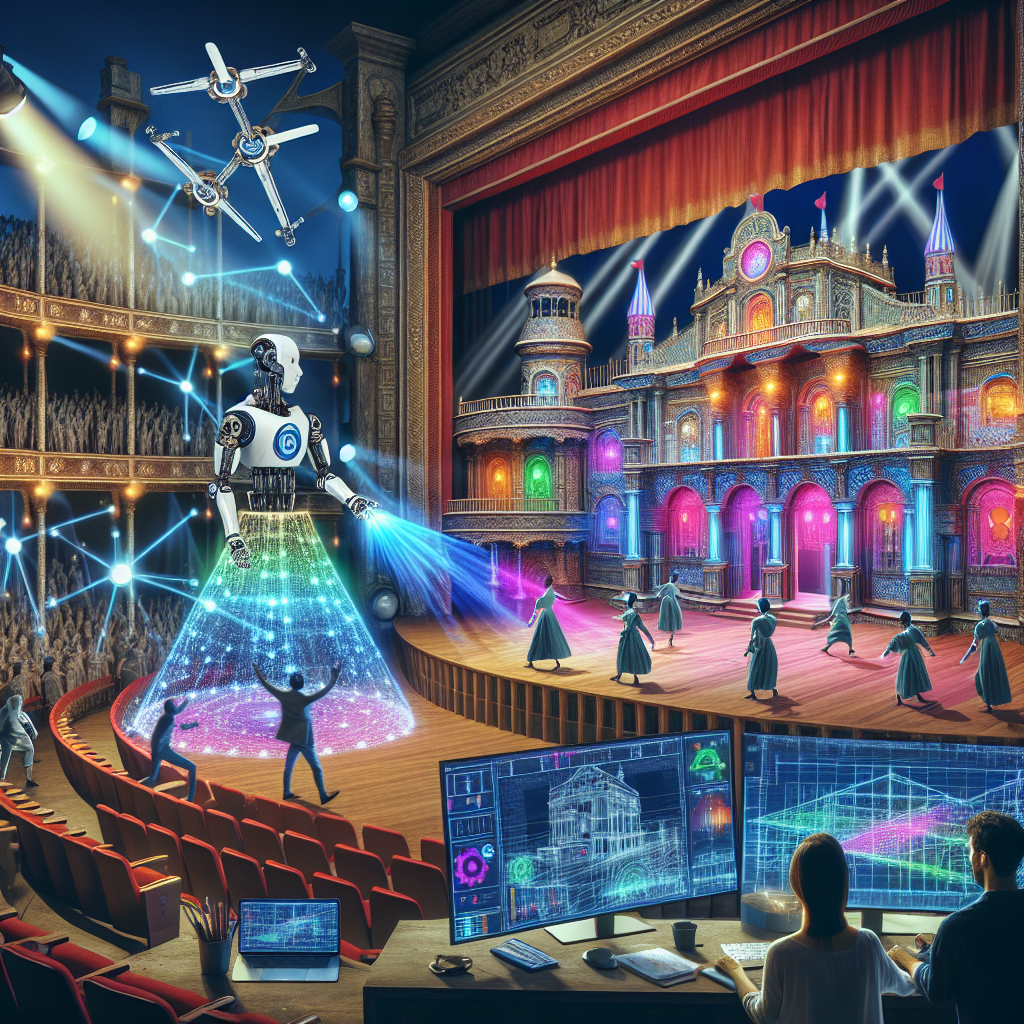Artificial intelligence (AI) is rapidly transforming various industries, including the world of theatre design. From set construction to lighting design, AI is revolutionizing the way productions are brought to life on stage. With its ability to analyze data, generate designs, and streamline processes, AI is enhancing the creative and technical aspects of theatre design in unprecedented ways.
Set Construction
One of the key areas where AI is making a significant impact in theatre design is set construction. Traditionally, set designers would spend countless hours sketching, drafting, and building physical models of sets before finalizing their designs. However, AI has changed the game by automating many of these processes and providing designers with new tools to bring their visions to life.
AI-powered software programs can now generate 3D models of sets based on input from designers, allowing them to visualize and refine their designs in a virtual environment. This not only speeds up the design process but also enables designers to experiment with different concepts and layouts far more efficiently than before.
In addition, AI can analyze data from past productions to identify trends and patterns that can inform new set designs. By studying audience reactions, ticket sales, and other performance metrics, AI can help designers create sets that are more visually appealing and engaging for audiences.
Furthermore, AI can optimize the construction process by generating detailed plans and instructions for building sets. By analyzing materials, budget constraints, and other factors, AI can help designers create sets that are not only aesthetically pleasing but also practical and cost-effective to build.
Lighting Design
Another area where AI is revolutionizing theatre design is lighting. Lighting plays a crucial role in creating mood, atmosphere, and visual impact on stage, and AI is helping designers achieve these goals more effectively than ever before.
AI-powered lighting design software can analyze the layout of a stage, the movements of actors, and other variables to create dynamic and visually stunning lighting effects. By adjusting color, intensity, and direction in real-time, AI can enhance the emotional impact of a scene and bring performances to life in ways that were previously impossible.
Moreover, AI can automate the process of programming and controlling lighting cues during a performance. By analyzing the script, music, and other cues, AI can synchronize lighting changes with the action on stage, creating a seamless and immersive experience for audiences.
FAQs
Q: How is AI being used in set construction in theatre design?
A: AI is being used in set construction to generate 3D models of sets, analyze data from past productions, and optimize the construction process by generating detailed plans and instructions.
Q: How is AI being used in lighting design in theatre design?
A: AI is being used in lighting design to create dynamic and visually stunning lighting effects, automate the process of programming and controlling lighting cues during a performance, and synchronize lighting changes with the action on stage.
Q: What are the benefits of using AI in theatre design?
A: The benefits of using AI in theatre design include speeding up the design process, enabling designers to experiment with different concepts and layouts more efficiently, creating sets that are more visually appealing and engaging for audiences, and enhancing the emotional impact of performances through dynamic lighting effects.
In conclusion, AI is revolutionizing theatre design by enhancing set construction and lighting in ways that were previously unimaginable. By automating processes, generating designs, and analyzing data, AI is helping designers create visually stunning and emotionally engaging productions that captivate audiences and push the boundaries of creativity and innovation in the world of theatre.

